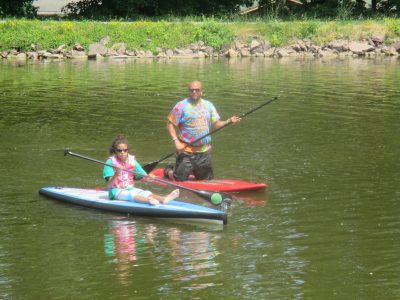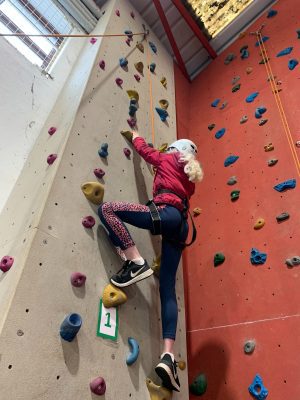By June Converse.
If you follow this blog, you might remember reading an article titled Let ‘Em Crash where I realized just how much I had to learn. Shortly after I returned home from my first Camp Abilities, I received an article titled “19 Ways to Step Back”. The article is geared toward teachers but as I read through the list, I realized these 19 Ways apply to coaches, parents, anyone who works with our youth.

As adults we are challenged to protect and support but also to PROMOTE INDEPENDENCE. Take a few minutes to read through the list and identify ways you balance being supportive with promoting independence. I found it helpful to replace the word “student” with an actual name of a young person I have an opportunity to impact.
As a parent myself, I know it’s hard not to jump in and rescue. But the fact is, our children grow up and must make it in the real world. Perhaps practicing these 19 Ways may make that transition easier for our children and ourselves.

19 Ways to Step Back- Adapted from Classroom Collaboration, by Laurel J. Hudson, PhD (Perkins School for the Blind)
- You’re stepping back so your students can step forward and become independent. Keep this in mind.
- Clock how long it actually takes for students to start zippers, pick up dropped papers, or find page numbers. What’s a few more seconds in the grander scheme?
- Sit on your hands for a whole task while you practice giving verbal instead of touch cues. Hands off the hands!
- If you need touch cues, try hand-under-hand instead of hand-over-hand. This gives students much more choice.
- Let your students make mistakes and get into trouble. It’s part of the human experience!
- Acknowledge your own needs. There’s a reason you chose the helping profession.
- Sit further away. If you’ve been within arm’s reach, sit just within earshot. If you’ve been sitting just within earshot, sit across the room.
- Pat yourself on the back every time you help with seeing, not thinking. Your job is to give information.
- Even though helping can feel right, be aware that too much assistance is short-sighted. Sometimes less is more, less is better.
- Catch yourself before you correct your students’ work. Don’t cover for them. This is about their skills… not yours.
- Commit to no intervention for a whole activity. Take data instead. Things might not fall apart as much as you had expected.
- “What page are we on?” “What’s for lunch?” Have students ask their classmates instead of you, both during school and on the telephone.
- Assign student learning partners and sighted guides.
- Teach students to decline assistance, “Thanks, but please let me try it by myself.”
- Whenever you add prompts, include a plan to phase them out.
- Let the boss know that you need to step back so that your students can be more independent. You’re not shirking your responsibilities.
- Collaborate with other adults to break your habits of helping too much. Agree to remind each other to step back.
- Try helping only when classroom teachers give you a signal. They may prefer to respond directly or to give students longer to work it out alone.
- Post a sign, “Are there any other ways I could step back?”


